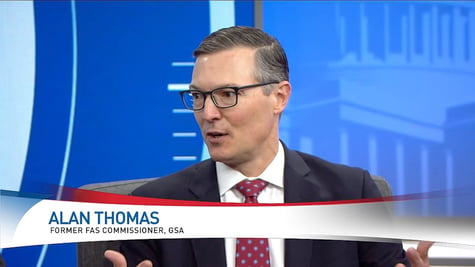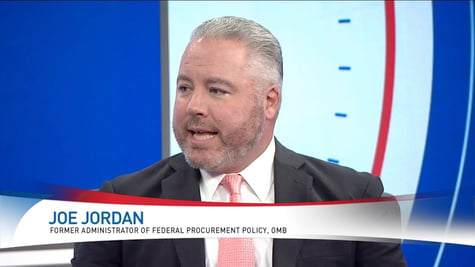In the opening segment of Fed Gov Today with Francis Rose, host Francis Rose explores the growing impact of the federal government shutdown as it enters its third week. He’s joined by Joe Jordan, President and CEO of Actuparo and former Administrator for Federal Procurement Policy, and Alan Thomas, owner of Alpha Tango Strategies and former Commissioner of the Federal Acquisition Service at the General Services Administration. Together, they paint a clear picture of how the shutdown is rippling through the federal marketplace—halting spending, freezing payments, and pressuring both agencies and contractors.
The Federal Buying Machine Grinds to a Halt
Joe Jordan sets the stage by explaining that the shutdown is “messy and inefficient.” By week three, he says, most agencies have burned through any leftover funds they had set aside, leaving them unable to pay invoices or continue non-essential work. While programs with multi-year or “no-year” appropriations can still operate, the rest of the federal buying system is grinding to a stop. That means vendors who depend on timely government payments must now manage delayed invoices and mounting cash flow challenges.
Alan Thomas echoes that concern, sharing an example from one of his small business clients who had to open a line of credit just to make payroll. “They haven’t drawn on it yet,” he says, “but they’re preparing for the worst.” He notes that this is becoming a familiar story across the contracting community, especially for small businesses without deep financial reserves.
The Small Business Squeeze
Both guests agree that smaller firms are most vulnerable. Thomas observes that companies whose primary customer is the federal government will do everything they can to weather the storm—taking on debt, cutting costs, or deferring payments. But for new entrants—those innovative commercial firms the government says it wants to attract—this experience could be discouraging. “If this is your first taste of the federal market,” he says, “it might leave a bad taste in your mouth.”
Jordan adds that this instability undermines the government’s long-term goal of diversifying its supplier base, especially within the defense industrial base. The very companies the government wants—innovative, agile, tech-focused firms—might look at this uncertainty and decide the federal market isn’t worth the risk.
Practical Advice for Contractors
Jordan and Thomas both offer clear advice for vendors trying to navigate the shutdown. Jordan urges contractors to track every shutdown-related cost, from stop-work orders to administrative delays, because those records may support requests for reimbursement once operations resume. He also emphasizes managing cash flow tightly and communicating frequently with employees, many of whom are anxious about what the disruption means for their jobs and paychecks.
Thomas reinforces the importance of maintaining communication—not just within companies, but between industry and government. “Keep talking to each other,” he says. Even though many federal employees are furloughed, relationships built during difficult times often last. Staying connected, he explains, can help contractors position themselves to respond quickly once funding is restored.
Preparing for the Restart
Looking ahead, both experts stress that contractors should start planning now for the government’s eventual reopening. When agencies return to work, Jordan says, federal employees will face enormous backlogs of invoices and projects. Contractors who approach those early interactions with patience and understanding will stand out. “Have a collaborative tone when you reengage,” he advises. “Those first few days back are going to be overwhelming.”
Thomas agrees, saying that recovery is as much about human factors as logistics. Leaders should check in with their teams, acknowledge stress, and reinforce that everyone’s role matters. He recalls lessons from past shutdowns—especially the 35-day partial shutdown in 2018–2019—when GSA continued operating but had to be sensitive to the many agencies it serves. “We told our customers, ‘We’ve been doing everything we can while you were away to make sure your programs stay on track,’” he says.
Lessons from Past Shutdowns
Both guests have lived through previous shutdowns and reflect on what they learned. Jordan recalls the 2013 shutdown, when he worked at the Office of Management and Budget. It lasted 17 days, and he remembers how quickly federal employees and contractors pulled together once it ended. “I was impressed with how fast operations got back to normal,” he says. That recovery, he explains, came from teamwork and a shared sense of mission.
Still, both acknowledge that each additional week of shutdown makes recovery harder. As bills go unpaid and federal employees miss paychecks, morale and focus suffer. Thomas warns that the psychological toll on the workforce is real: “It’s been a tough year for federal employees. Even when they come back, the climate feels a little rainy.”
Leading Through Uncertainty
Francis closes the discussion by asking what leaders should do to support employees during and after the shutdown. Thomas says strong leadership is about empathy and clarity—reminding people that they are valued and essential. “You can be for reform,” he says, “but you’ve got to also be for the people on your team.”
Jordan agrees, adding that leaders should avoid dividing staff into “essential” and “non-essential” categories. “That’s not what it means,” he says. “It’s just who’s exempt from the Anti-Deficiency Act.” Maintaining unity and respect within the workforce, he concludes, is critical for morale and mission readiness.
